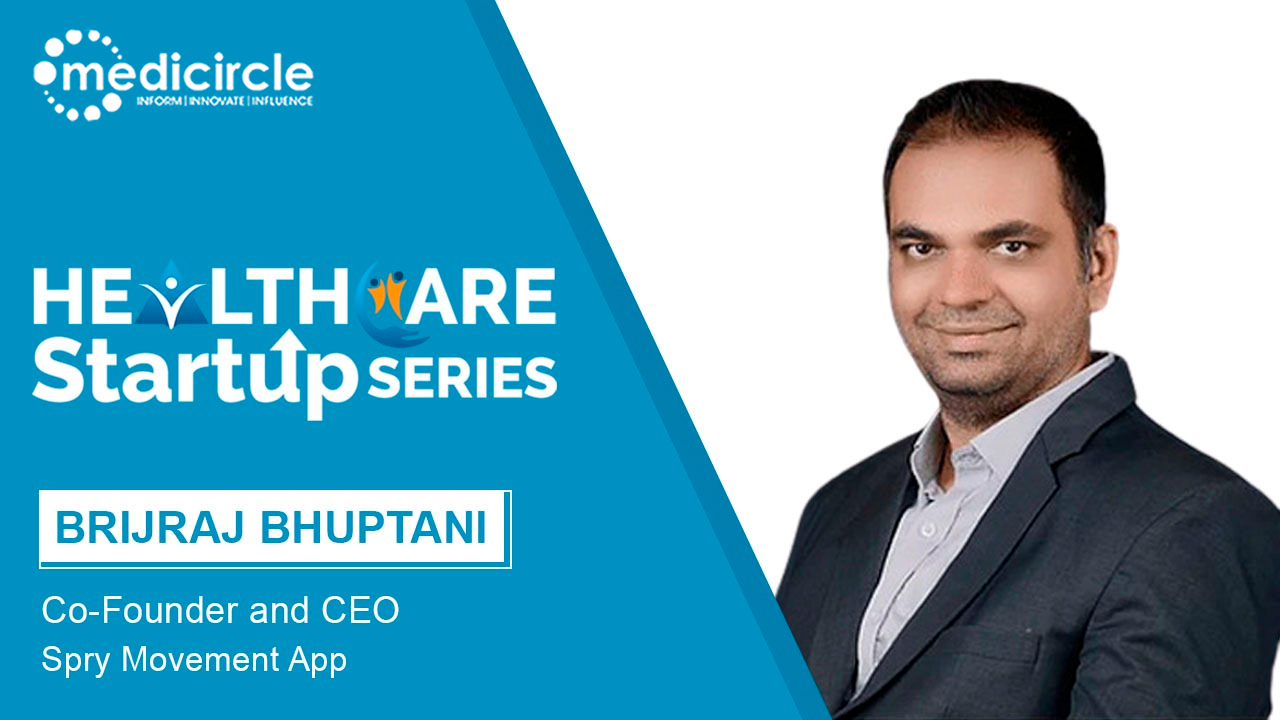Brijraj Bhuptani is the co-founder of the Spry Movement App. He was previously the co-founder and CEO of Birds Eye Systems Pvt. Ltd, which was acquired by Ola. He has worked as a Delivery Manager with Sears India and was the Chief Technology Officer for Ola. His aim with the Spry Movement is to make movement health accessible and affordable for 2 billion people who are suffering from it.
What led to the initiation of the Spry Movement App?
Brijraj narrates, “I am the second time founder. I have built one company and have seen what scale means. This time I was looking for a big opportunity where I can impact a million lives. Worldwide, 2 out of 3 people have back pain or knee pain. 1 out of 3 people need musculoskeletal rehabilitation but don’t have access to care.
I was a sportsperson all my life. And in sports, niggles, injuries, and pain are very common but for me, care was easily accessible. My sister was one of the best sports physicians in the country, she would suggest some exercises and I would get going. So, I didn't think of it as a problem. But during the pandemic, my same sister was struggling with online consultation (zoom calling, monitoring exercises, the patient's adapting/adhering to what is being asked for). I realized there was no seamless platform for care providers to manage their patients end to end.”
“On the other hand, my mother was struggling to get the knee replacement done or a therapist for exercise but due to lockdown, she was not able to get help. I have seen both aspects, a doctor struggling in transitioning from offline to online and a patient not being able to avail care. So, I thought of bringing all this in a single platform, by this healthcare will not only be affordable but accessible too”, says Brijraj.
Brijraj adds, “In all developed countries, the aging population is increasing. By 2040, you will have more of the elderly population than younger age groups. As we age muscle mass decreases, and joint pain and back pain gets common. Secondly, the distribution of therapists was constrained to bigger towns, bigger cities only. So, there was a huge demand for this.
The idea behind this startup ‘Spry’ was to make a platform, connecting all these loopholes, and make healthcare accessible and affordable.”
All about Spry Movement App
Brijraj explains, “Spry is the purpose-built platform for physical rehabilitation. Physical rehabilitation is one of the segments of healthcare but a different one. Physical therapy was once one of the most searched things on google. Treatments are very much personalized. Treatments are truly based on your medical history and current status. Rehabilitation is very behavioral and happens outside the clinic. So, the platform has to be patient-centric.
There are 2.5 million physical therapists in the world who don’t have any software built for their workflow. They mostly use excel sheets. And this calls for a transformation”
Spry - USP
Talking of their product USP, Brijraj states, “We design workflow with the physical service specific. After designing personalized treatment by the doctor, we monitor the user whether he/she is adapting/adhering to what is being said or not. We get feedback and then the doctor also knows whether the patient is progressing or not. This is how we solve problems with the physical therapist at each step.”
Brijraj emphasizes, “We are not in the business to make or design the plan of care. A plan of care is still designed by the doctor. We provide them with the tools which make it easy for them to design and then patients adhere to this plan of care. Spry acts as an intermediator between patient and therapist who helps them understand the treatment, guide them, observe them and monitor their progress to increase the chances of patient adherence. The doctor should be focused on the plan of care and not on administrative issues. So, we try to give a comprehensive musculoskeletal diagnosis.”
Client base – Customers benefit from the startup
Brijraj informs, "150 clinics are being benefited by the startup across the world, and the majority of them that is 130 are in India. Places, where we have directly impacted, are
- No. of people booking appointments and no. of people showing up
- Doctor burnout
- Cashflow
We are working mostly on the patient's side so that they can easily access it from home. We have worked on patient adherence, how many people are completing the course of treatment. We found out that only 20-30% of people complete the plan of care. A higher percentage of patient adherence will reduce the chances of future injury.”
Funds and their utilization
Brijraj mentions, “Majority of the funds are being utilized in product development and go-to-market strategies. Product is in the stage where it’s being well received by people and the physical therapist community of India as well as the US.”
Revenues for the financial year
Brijraj tells, "It's very early to discuss revenues. We have onboarded in just 150 clinics. In the US, we make around 20,000-25,000 dollars/clinic/year and in India, we make around 50,000-60,000 Rs/clinic/year. It’s very early to talk about figures, by the end of the year we are targeting 3 million ARR.
Right now, we are not focusing on expansion. The US is a very big market, its 40-billion-dollar market, growing at a 6% CAGR. We are going deeper to increase the portion of the value chain. I am not worried about the competition; we just want to renovate the aspects of physical therapy.”
Advice for young Indian entrepreneurs
Brijraj advises, “I can share some of my learnings, one has to be focused on the business model. Understand the value chain, don't just love big numbers. Solve the difficult problems first, don't delay them.”
(Edited by Renu Gupta)

 Movement is the essence of life. Movement is freedom. With this thought, entrepreneur Brijraj Bhuptani came up with the Spry Movement App. This startup aims to make movement health accessible and affordable for 2 billion people who are suffering from it. If you are also an aspiring entrepreneur, let this story guide your planning.
Movement is the essence of life. Movement is freedom. With this thought, entrepreneur Brijraj Bhuptani came up with the Spry Movement App. This startup aims to make movement health accessible and affordable for 2 billion people who are suffering from it. If you are also an aspiring entrepreneur, let this story guide your planning.





.jpeg)
.jpeg)
_(1)_(1)_(1).jpeg)
.jpeg)
_(1).jpeg)


.jpeg)







.jpeg)


.jpeg)
.jpeg)
.jpeg)





.jpeg)
.jpeg)